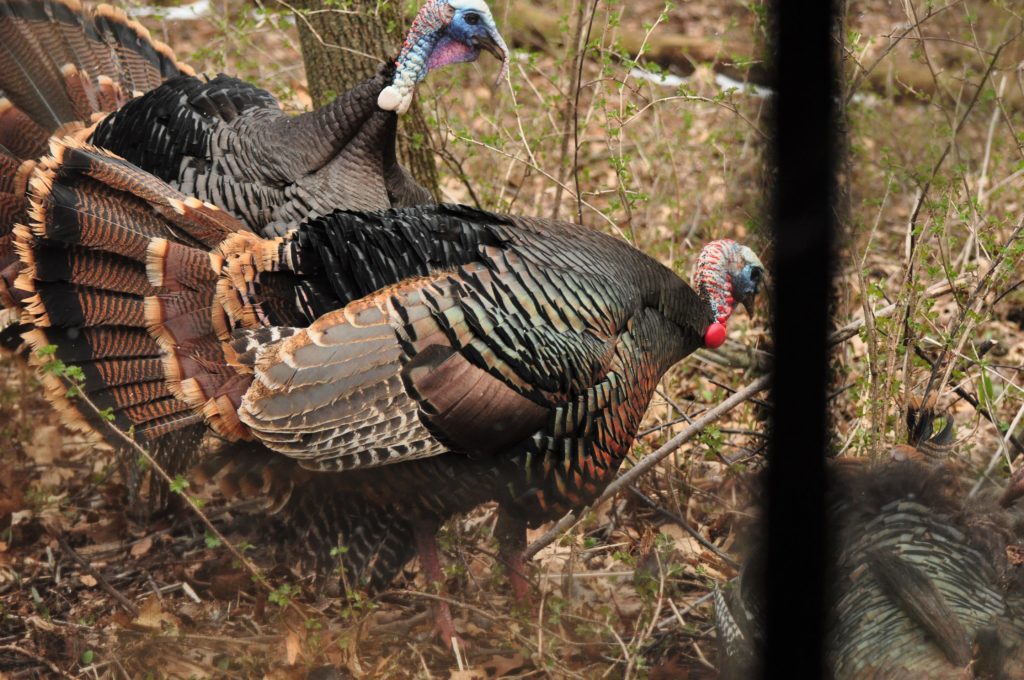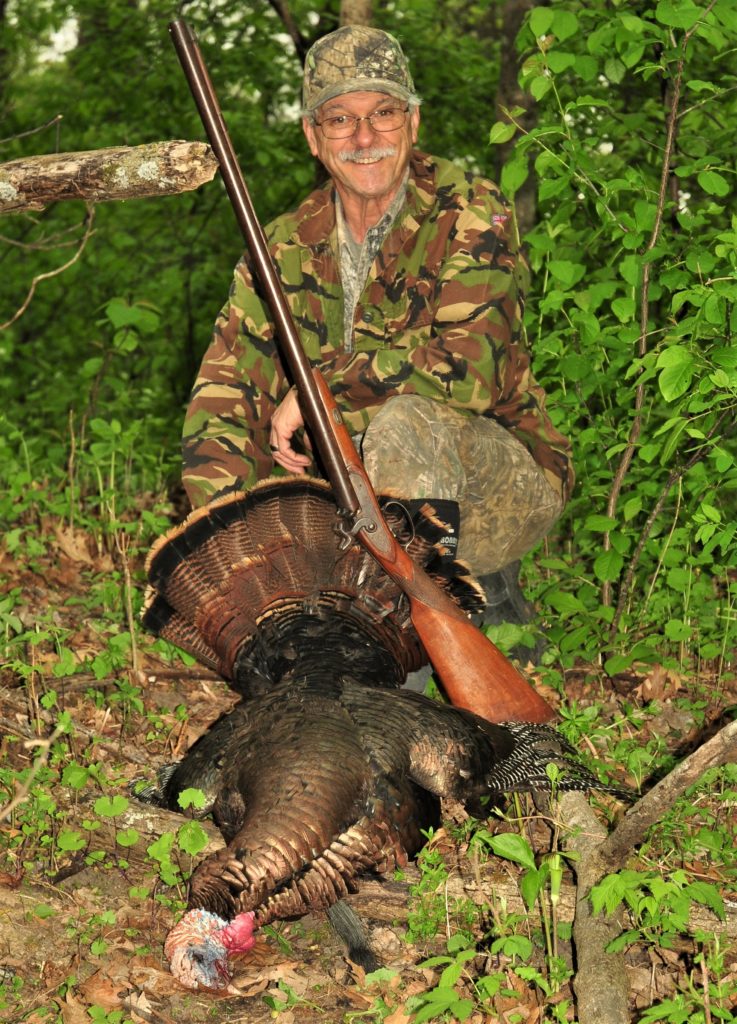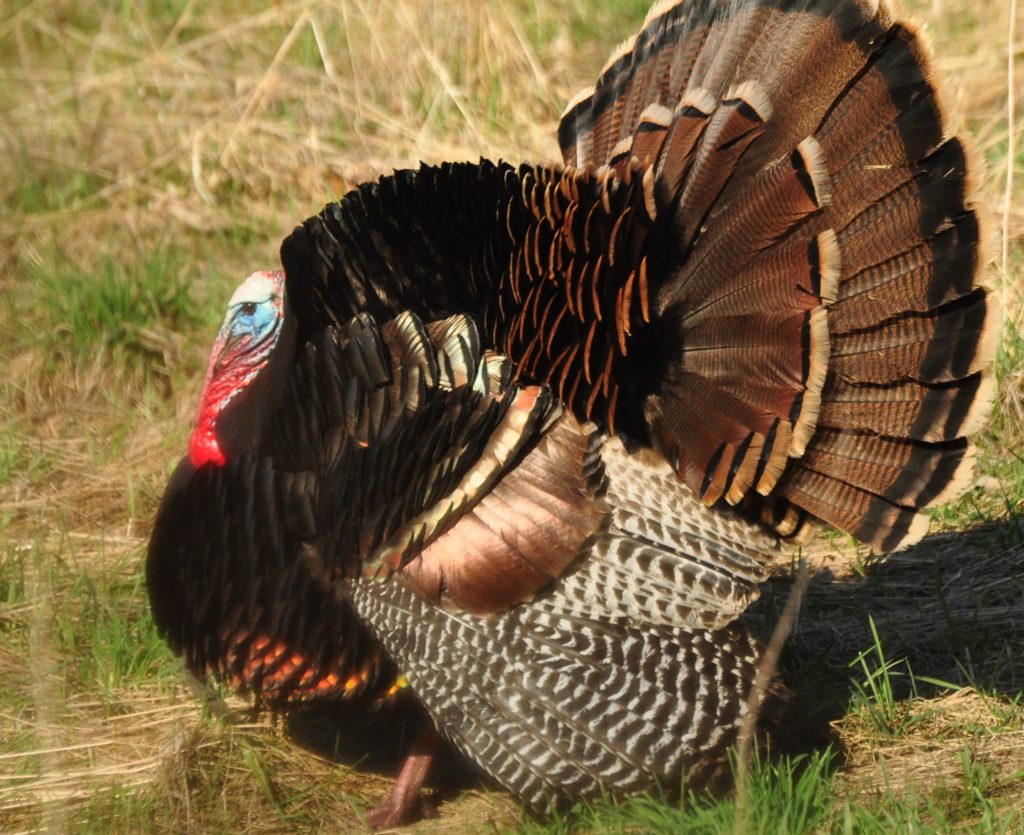Photography courtesy of Lowell Washburn, all rights reserved.
Time flies when you’re havin’ fun; and I rarely have more fun than when hunting wild turkeys. But all good things must come to an end; hard to believe that all five segments of Iowa’s spring turkey seasons have come and gone. The final season ended last Sunday.
As always, it proved to be an interesting spring with both the weather and the turkeys delivering their share of surprises. The season began with unusually cool weather. The wind was howling and there was still patchy snow on the ground when I attached my archery tag to the leg of a mature, three-year-old gobbler during the first day of the first season. Within seconds of downing the turkey, I was surprised when an additional pair of Long Beards emerged from the brush. Rushing to my position, the agitated gobblers decided to stage an impromptu, no holds barred, turkey smack down. Wings thrashed, spurs clashed, and feathers flew until a sudden snow squall shut the rumble down.

After that, I sat on the bench for the next couple of weeks, taking more turkey photos and listening to the adventures of other hunters while I waited to legally resume hunting during the season’s final segment. By the time the late season arrived, the landscape had turned green, the air was heady with the fragrance of plum blossoms, and migratory songbirds were arriving by the hundreds. For my late, fourth season hunt, I traded the longbow for an old double-barreled Navy muzzleloader – the same cylinder bore scattergun I used when modern-day Iowa turkey hunting first commenced during the 1970s.

To my surprise, the final outing proved as exciting as the first – becoming an hours’ long, edge of your chair, cliffhanger that was adrenaline charged from the word go.
The hunt began in the predawn darkness of a public woodland. When a barred owl suddenly sounded off from an overhead branch, two nearby toms shock gobbled in response – a good start for any turkey hunt. When it eventually began to get light, the dynamic duo cranked up in earnest, rocking the timber with a high energy, fifteen-minute gobble fest.
It was still about half dark when the toms came off the roost; the closest landing about twenty-five yards away. When I called, he immediately came closer but then turned to join the second gobbler who was raising the roof from back in the gooseberries. Before long, I could hear a single hen begin yelping. She quickly joined the gobbling toms, and the trio moved off in the opposite direction. As far as these birds were concerned, my hunt was over.
Moving to a second public area, I didn’t hear another gobble until around 8 o’clock. And although we readily began to communicate, the bird failed to commit, offering only two brief glimpses during the next two and a half hours of cat and mouse.
Finally – at 10:45 – the reluctant gobbler began showing signs of increased aggression. With the tom now standing at 30 yards or less, I watched as the red, white, and blue coloring of his head and neck suddenly began to intensify. The change was so swift and so dramatic that it was like watching a light bulb go from 40 watts to 500 in the span of two or three seconds. All suspicion had now vanished. With tail fanned and wings dragging, the big gobbler marched straight to me, stopping at a distance of just five paces. It was an amazing conclusion to this year’s season, and I’ll be replaying the mental image of that magnificent scene for a long time to come.

By The Numbers: Other Iowa hunters were enjoying excellent success as well. According to DNR harvest reporting data, turkeys were bagged in each of Iowa’s 99 counties during 2020 and the number of spring turkeys bagged this year increased significantly from 2019. In North Central Iowa – the region where I spent the entire season – all counties showed an increase over 2019. In Cerro Gordo county, a total of 135 turkeys were reported this spring compared to 88 in 2019. In Winnebago county, 67 gobblers were taken in 2020; 43 were reported last year. A total of 34 wild turkeys were harvested in Hancock county during 2020; 24 were taken in 2019.
The increased harvest was not limited to North Central Iowa but occurred across the state, resulting a statewide bag of 14,606 spring turkeys – a 3,232 bird increase over the 11,374 turkeys taken in 2019.
Final Thought: Considering this year’s spectacular increase in harvest numbers, it would seem reasonable to assume that Iowa turkey populations have also increased significantly. Ironically, just the opposite may be true. With few exceptions, veteran turkey hunters from across the state reported seeing and hearing fewer gobblers in fewer places than in previous years.
So why the spike in this year’s turkey harvest? Public response to the COVID-19 pandemic might be the best guess. With record unemployment claims and thousands of Iowans out of work, a lot of people have time on their hands. For many, spending time outdoors certainly beats day after day of sitting at home. Since turkey hunting is a solitary [physically distanced] form of outdoor recreation, it is likely that more people – including many first timers — hunted turkeys for more hours during more days than in previous years resulting in the increased bag. According to DNR Conservation Officers, hunting pressure on public areas appeared unprecedented during the 2020 seasons.

 Tom Cope
Tom Cope Sue Wilkinson
Sue Wilkinson Susan Judkins Josten
Susan Judkins Josten Rudi Roeslein
Rudi Roeslein Elyssa McFarland
Elyssa McFarland Mark Langgin
Mark Langgin Adam Janke
Adam Janke Joe Henry
Joe Henry Kristin Ashenbrenner
Kristin Ashenbrenner Joe Wilkinson
Joe Wilkinson Dr. Tammy Mildenstein
Dr. Tammy Mildenstein Sean McMahon
Sean McMahon